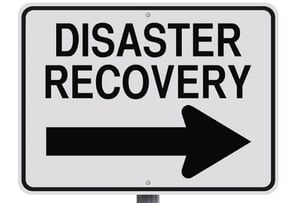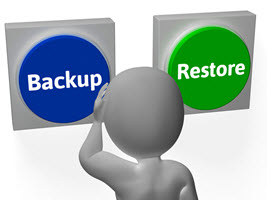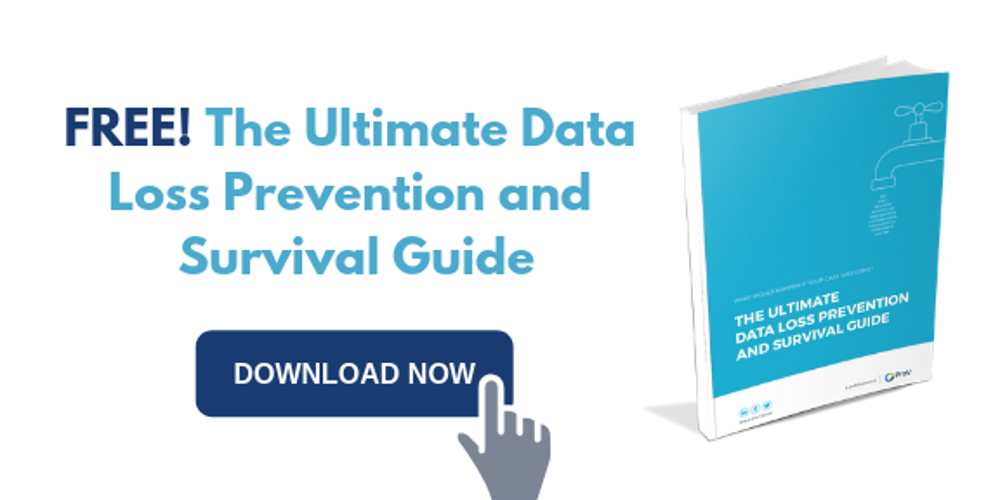A service outage is like a leech which latches on and sucks your company dry. You may not even realize it until it’s too late, but service outages eat away at your revenue and ROI significantly. We talked about the possibility of losing up to $83,000 per minute due to IT downtime in a previous post. In this blog, we'll try to look at some ways that disaster recovery works and how it ensures business continuity.
What is Disaster Recovery?
Disaster recovery is a branch of business IT planning that aims to restore mission-critical business processes following a disaster or a service outage as soon as possible.

What is a Disaster Recovery Plan?
A Disaster Recovery Plan (DRP) is a documented set of instructions designed to respond to unplanned incidents of disaster or service outages. A DRP is a step-by-step guide that aims to minimize the effects of IT downtime and contains the steps for fastest recovery times after an outage occurs.
What is a Disaster?

In IT terms, a “disaster” is an event that can lead to a service outage or a malfunction of IT resources. It can be used to describe both natural disasters as well as man-made disasters, including:
- Tornadoes, hurricanes, and tropical storms
- Floods, wildfires, and earthquakes
- Application failure, VM failure and host failure
- Physical theft/loss and cyber-espionage
- POS Intrusions, Denial of Service (DOS) attacks, etc.
Why Do You Need Different Types of DRPs?

All Disaster Recovery Plans are designed to reduce downtime and increase availability. However, not all applications require the same level of business continuity. This means that while all processes running across your organization are important, some are not “critical.” Some processes may be able to deal with data loss for a little while, but some cannot. Based on that assumption, there are two models of a DRP that you can choose from:
1) Active/Active
In an active/active high availability cluster, there are typically at least 2 nodes. These nodes actively run the same kind of service simultaneously to achieve load balancing. By distributing the workloads across multiple nodes, you can achieve a significant improvement in response times. This is because one node automatically replicates all of the data collected by the primary server to the secondary server.
Some characteristics of the active/active model of implementation are:
- Optimum load balance between all available servers (remote or in-house).
- The clusters automatically switch control to the secondary server, almost immediately, after failure (lowest possible downtime).
- License pricing is high since all servers are to be kept active at all times.
- Possible huge investment in infrastructure and manpower to maintain multiple server sites.
2) Active/Passive

An active/passive high availability cluster also consists of at least two nodes. However, in this configuration, not all nodes are kept active at the same time. One of the nodes is kept active, while the second node is kept on standby. This sort of configuration does reduce downtime significantly, although there is a little chance of data loss between the time the server was last updated (backed-up) and when the service outage occurred. The active node can also be set-up for an automatic takeover from the active to the passive server in case of a failure.
Some characteristics of the active/passive model of implementation are:
- Typically, a cluster of active servers manages all workload, and only transfer to a secondary server in case of a fault.
- Failover from primary to secondary server is often automatic.
- License pricing is affordable.
- Much less investment in infrastructure and manpower to maintain only one active cluster at a time.
ProV is a premier global IT service delivery company, providing world-class disaster recovery and business continuity options to keep your business going, no matter what.
Download our FREE The Ultimate Data Loss Prevention and Survival Guide below to understand how managed IT services can ensure your business' continuity through disasters. For anything else, drop a comment below or contact us today.

